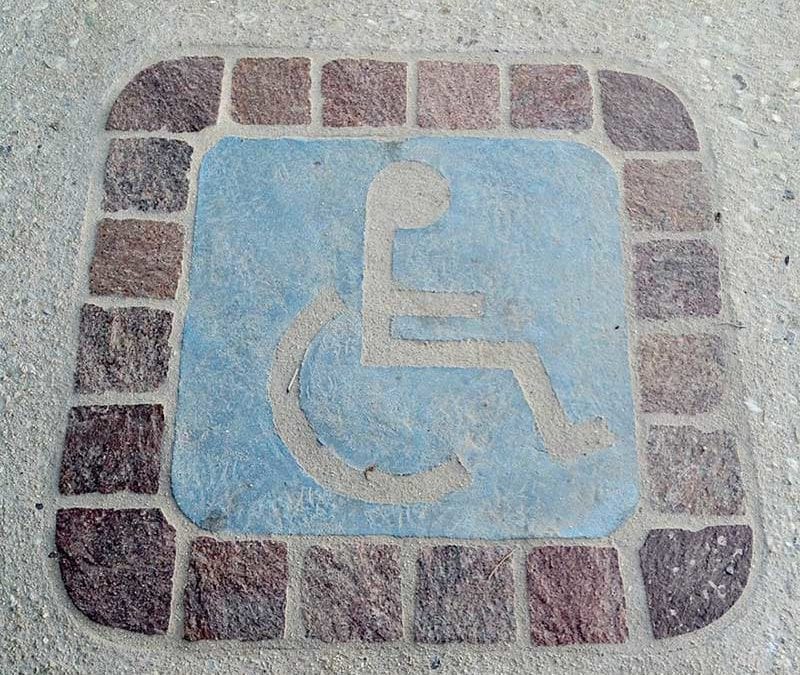I spend a lot of time looking for accessible entrances. A lot.
My only guide is that blue universal sign. Does it indicate exclusivity for wheelchair users? Not at all. Every one benefits from a step-less entry: delivery people, postal carriers, movers, paramedics, parents with strollers, little ones, people with ambulatory issues, people with vision impairments, people with balance problems. And, I suppose, drunk people, people pushing any type of cart, kids sporting sneakers with wheels, people pulling luggage, skateboarders, dog-walkers. Given the need, do we need to call attention to those who use wheelchairs by using the current sign? Do we need to stigmatize entrances? Are they exclusive?
No.
If I see someone carrying two heavy grocery bags, I do not deny them the use of a step-less entry and force them to climb a set of steps. It’s a given that they would use the ramp. So why have we chosen to create this narrow symbol for an entry that does not have steps? More importantly, how does this symbol serve us as people, as customers, as tourists, as attendees, as visitors? I contend that it perpetuates a false dichotomy between wheelchair users and the rest of the world.
So let’s look at parking, shall we? Once again, spaces are designated by my friend the wheelchair user on a blue background. At its most basic level, the sign indicates that parking spots are for people who use wheelchairs. It is international. And understood. A person who does not speak English can discern from the symbol on a Seattle street that this is a parking place for a wheelchair user. They can match me to the sign and make the connection. Thumbs up! Folks with crutches? They don’t match the sign. How about a serious heart condition? Thumbs down. Sorry!
I am not advocating for removing accessible parking signs, not by any means. Please! Those spaces were hard won and paid for by the sweat and tears and hearts and minds of advocates who came before me. But what I am saying is that we need to re-think how we look at access and ability. In other situations, would we really accept a sign that is so specific as the “handicapped one” to cover such a large coalition?
The situation speaks to our flawed ways of thinking about disability. I’m no poster child. I do not want to be the sole representation of millions of people with disabilities. We need to expand how we think about access and how we designate access. Language matters. Signs matter, too.


Stand in your rampant position and defend your ramp against all trespassers—Sir R. Earle III
Agreed. There is grayness here. The coalition is large